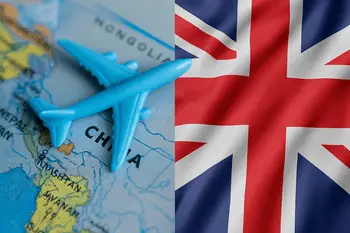
Adopting a pet in China combines the emotional reward of giving an animal a home with practical steps that vary by city, port, and whether the animal is local or arriving from abroad.
This guide covers how adoption works locally, legal and health requirements for importing dogs and cats, port-specific services you’ll encounter at major entry points, and how to find certified pet import specialists to manage complex moves.
It’s written for both domestic adopters and expats planning relocation to or within China.
Why adopt rather than buy
Adoption reduces stray populations, supports rescue organizations, and often gives you an animal that has been vetted, vaccinated, and behavior-assessed by volunteers and shelters.
Organizations across China operate structured rehoming procedures to match animals with suitable owners, prioritizing local placements but sometimes arranging international rehoming when necessary.
How local adoption works in China
The typical adoption process
Most rescue groups and shelters follow these core steps: initial inquiry and application, home checks or interviews, medical checks and vaccinations, spay/neuter requirements, and a trial or foster-to-adopt period.
Many groups require applicants to provide details about living situation, other pets, and lifestyle to ensure suitability for the animal.
Finding reputable shelters and adoption events
Major cities like Shanghai and Beijing host recurring adoption events and maintain community networks where rescue groups post adoptable animals.
Local government pages and community-run WeChat accounts list adoption days and vetted shelters, making it easier to find trustworthy groups and events.
Adopting in specific Chinese cities
Beijing and nearby regions
Beijing has a mature adoption culture supported by shelters, rescues, and networks that actively promote rehoming and provide guidance on local regulations.
Many rescues in Beijing provide full medical histories and behavioral notes for prospective adopters.
Shanghai and municipal support
Shanghai offers public guidance on responsible pet ownership and maintains lists of adoption communities and events to increase adoption visibility and local support for rescues.
Guangzhou and southern China
Cities like Guangzhou have expanding animal-welfare networks and veterinarians familiar with both local adoption and international pet movement, including port procedures at Guangzhou Baiyun International Airport.
Bringing a pet into China: who can enter and core rules
China permits the importation of dogs and cats and enforces specific entry rules: microchipping, health inspections by official agencies at origin within a narrow pre-arrival window, and approved rabies antibody testing for many origins.
Pets missing mandated paperwork, chips, or test results may face quarantine or refusal at entry.
Step-by-step checklist for importing a pet into China
- Microchip: ISO-compliant microchip before any vaccines.
- Rabies vaccination: at least one rabies vaccination after microchipping.
- Rabies antibody titer: blood test from an approved lab if required by origin country.
- Health certificate: veterinary inspection and certificate issued shortly before travel by the official animal health authority in the origin country.
- Carrier and airline approvals: verify airline breed restrictions and carrier dimensions.
- Customs inspection: prepare to present documents to China Customs at arrival; incorrect or missing documents can trigger quarantine or denial.
Sources above provide detailed timelines and caveats owners must follow closely to avoid delays or quarantine.
Port-specific services and what to expect
Major Chinese ports and airports differ in procedures, available facilities, and service providers.
The most relevant elements for incoming pets are on-site customs inspection, quarantine facilities (if required), and dedicated animal-handling services.
What port-specific services do
- On-site animal health inspection by customs veterinarians.
- Short-term holding or quarantine facilities if paperwork is incomplete or tests fail.
- Specialized cargo handling for live animals and pet-friendly passenger-handling procedures.
- In some ports, liaison services that coordinate veterinary checks, pick-up logistics, and temporary boarding.
Below is a quick comparison of services at three major entry airports.
Port Services Comparison Table
| Airport | On-site Customs Vet | Quarantine Facility | Passenger Handling |
|---|---|---|---|
| Beijing Capital / Daxing | Yes; official inspection on arrival | Quarantine when required | Passenger pet pickup area; prior coordination recommended |
| Shanghai Pudong | Yes; clinical inspection required within 14 days pre-arrival | Quarantine for missing docs or failed tests | Pets escorted through customs; advance notice advised |
| Guangzhou Baiyun | Yes; common port for southern arrivals | Quarantine available; port-specific transport partners | Passenger and cargo handling options exist |
Sources: 上海市政府 travelchinawith.me ikkyinchina.com
Port examples and practical tips
Shanghai Pudong International Airport
Shanghai requires official animal health inspection documentation and typically processes arrivals with a focus on disease prevention.
Pets without required chips or valid titer certificates from trusted labs can be quarantined.
Guangzhou Baiyun International Airport
Guangzhou sees many international pet transfers and has multiple vets and relocation specialists familiar with local customs procedures.
If you’re arriving into Guangzhou, contact port-specific service providers or your airline for stepwise instructions and recommended veterinary partners to avoid delays.
Beijing Daxing or Capital Airports
Beijing’s ports require the same core documentation; local rescues and shelters can advise new adopters about registration and microchipping requirements within municipal guidelines.
Airlines, breed restrictions, and transport rules
Airlines impose breed and health restrictions for safety and welfare.
Some brachycephalic (short-nosed) breeds and aggressive breeds are often restricted or banned from carriage.
Airlines also have age and pregnancy rules for animals traveling by air; check each carrier’s live-animal policy well before booking.
Air China, for example, maintains explicit lists of breeds and conditions that are not accepted for carriage and defines eligibility criteria for pet transport.
Finding pet import specialists and relocators
When importing a pet to China, many owners hire specialists to manage the paperwork, titer tests, endorsements (e.g., USDA where required), and in-country customs clearance.
These specialists offer:
- Document preparation and verification.
- Coordination with exporting and importing vets.
- Endorsement and translation services.
- Arrangements for quarantine, temporary boarding, or home delivery at arrival.
Look for specialists with proven experience on China imports, clear references, and knowledge of port-specific procedures for your arrival airport.
Veterinary care after adoption or arrival
After adopting a pet or after import, immediate steps include a full veterinary check, updating vaccinations, microchipping verification, and municipal registration where required.
Larger cities have English-friendly clinics and advanced animal hospitals for diagnostics and specialty care; community pages and expat guides list recommended clinics and emergency contacts.
Legal, welfare, and municipal registration
Many Chinese cities require pet registration and rabies vaccination records to be kept current.
Registration practices vary by municipality; some require visible tags or linked microchip records.
Rescues typically help new owners understand local registration and compliance steps during the adoption process.
Costs to expect
Adoption fees usually cover medical care, initial vaccinations, microchipping, and spaying/neutering.
Import costs vary widely and may include:
- Veterinary fees for titer tests and pre-export checks.
- Official health certificate issuance and endorsements.
- Specialist or agency fees for document handling and customs clearance.
- Airline cargo charges or excess baggage fees.
- Possible quarantine fees if required upon arrival.
Expect import-related costs to exceed casual adoption fees; plan a realistic budget and request itemized estimates from relocation specialists.
Choosing the right rescue or breeder
Prioritize rescues and shelters that provide:
- Transparent medical records.
- Spay/neuter and vaccination proof.
- Behavioral assessments and foster references.
- Clear adoption contracts with return or support clauses.
Avoid purchasing from unverified sellers; rescues often screen owners and help match temperaments and lifestyles to the right animal.
Preparing your home and family
Before bringing an animal home, secure a safe environment: remove hazardous items, set up a quiet area with bedding, food, and water, and create a plan for training and socialization.
If you have other pets, arrange supervised introductions and update all animals’ vaccinations.
Common challenges and how to handle them
- Paperwork errors: double-check microchip IDs, vaccination dates, and lab certification names to match customs expectations.
- Breed or airline restrictions: confirm your breed’s eligibility with the carrier early and consider ground transport or alternative routes if blocked.
- Quarantine surprises: have contingency plans and a budget for temporary boarding or quarantine at arrival airports.
How rescues and shelters help with imports and rehoming
Some NGOs coordinate adoptions across borders and will guide potential adopters through required steps or recommend international partners.
Local rescues sometimes prioritize domestic rehoming but may facilitate international moves in select cases with trusted relocation partners.
Practical checklist for adopters and importers
- Verify animal’s ID and medical records.
- Confirm microchip is ISO standard and readable.
- Schedule and confirm rabies titers with an approved lab if required.
- Obtain and endorse health certificates within required timeframes.
- Book flights with pet-accepting carriers and confirm cabin/cargo rules.
- Contact port-specific handlers for customs and pickup coordination.
- Arrange post-arrival veterinary check and local registration.
Frequently asked questions
Q: Are only dogs and cats allowed into China?
A: Yes, current import rules are focused on dogs and cats; exotic or other species face stricter controls or prohibition in many cases.
Q: Will my pet always need quarantine?
A: Not always. Pets with accurate microchips, approved titer results, and correct veterinary certification may avoid quarantine, while missing documents or failed tests can trigger isolation.
Q: How long does the import process take?
A: Timelines depend on titer schedules, endorsement processing, and airline availability. Start planning months ahead to ensure all tests and paperwork fall within required windows.
Closing advice
Adopting or importing a pet to China is deeply rewarding but requires careful planning, attention to health documentation, and often coordination with port-specific services or import specialists.
Start early, use reputable rescue organizations and relocation experts, and prioritize your pet’s welfare through every step from paperwork to homecoming.
Sources
- https://tacn.org/adopt/rehoming-procedure/
- https://ikkyinchina.com/2025/11/03/guangzhou-vets-for-expats/
- https://english.shanghai.gov.cn/en-Pets/20231212/fc44f1d300084c1889a42315e6a58f18.html
- https://english.shanghai.gov.cn/en-Pets/20241216/d9402bcba62948d9aec5be49aa177ffb.html
- https://www.icvsasia.com/index.php?option=com_content&view=article&id=50%3Aadopting-a-pet-in-beijing-things-to-consider&Itemid=63&lang=en
- https://travelchinawith.me/china-travel-blog/bring-pet-to-china/
- https://m.airchina.com/c/invoke/animalInstruction@pg


